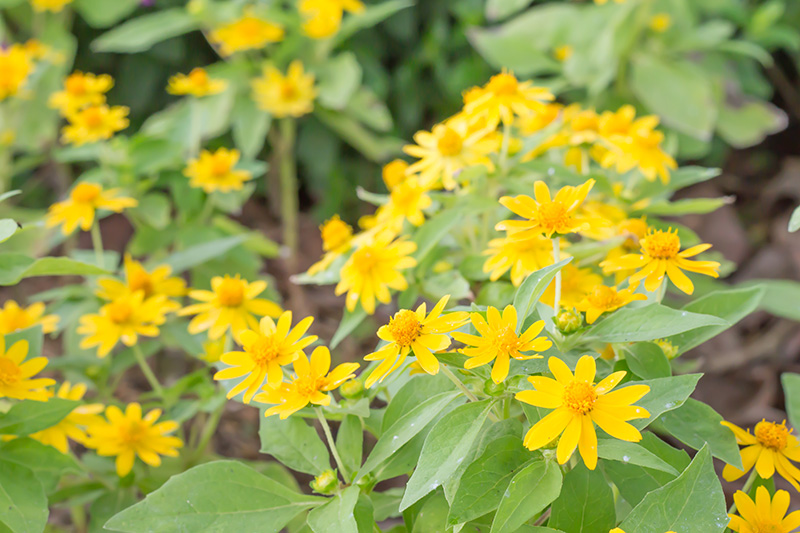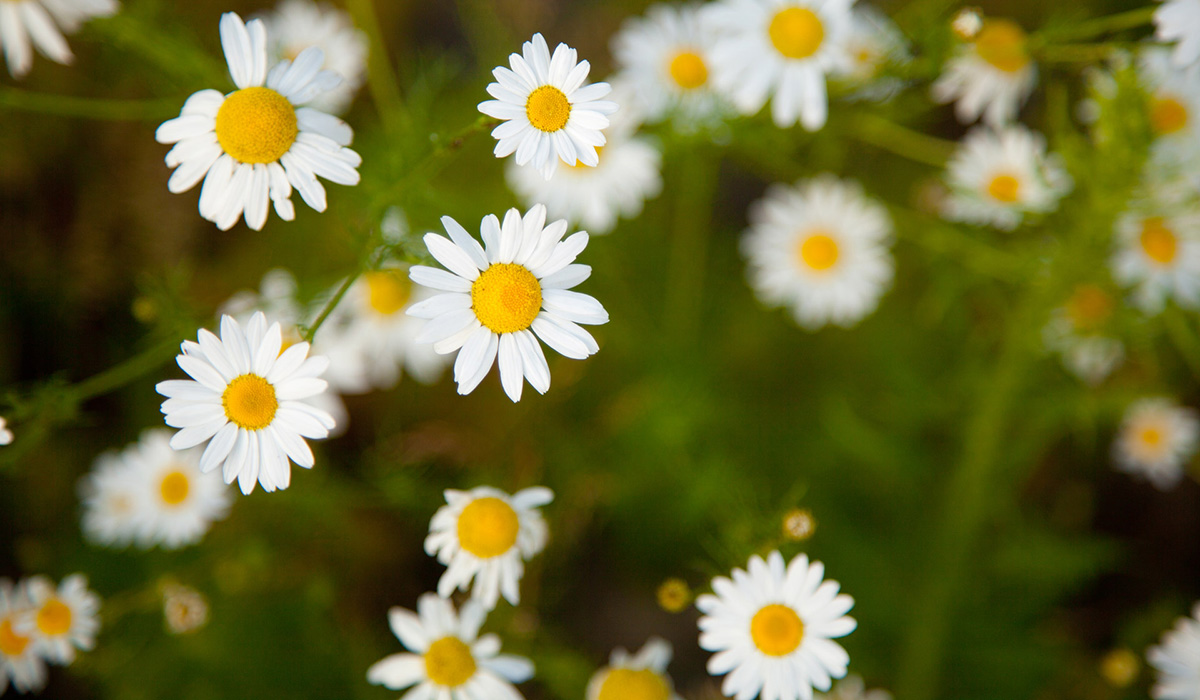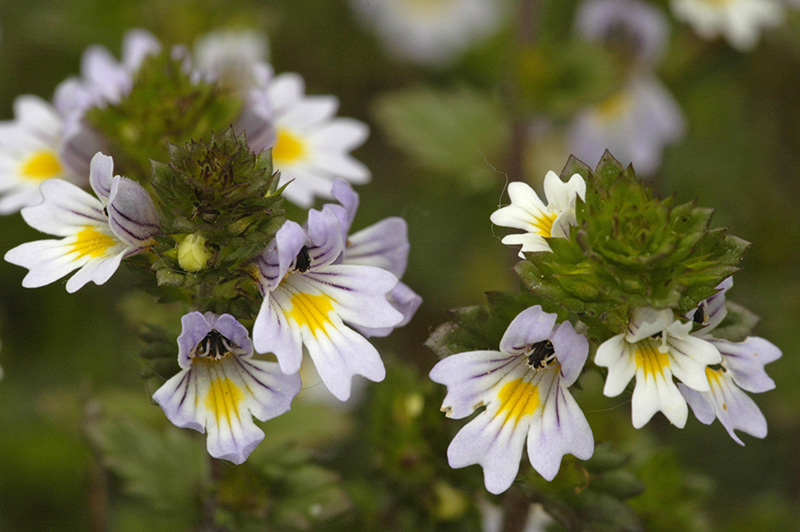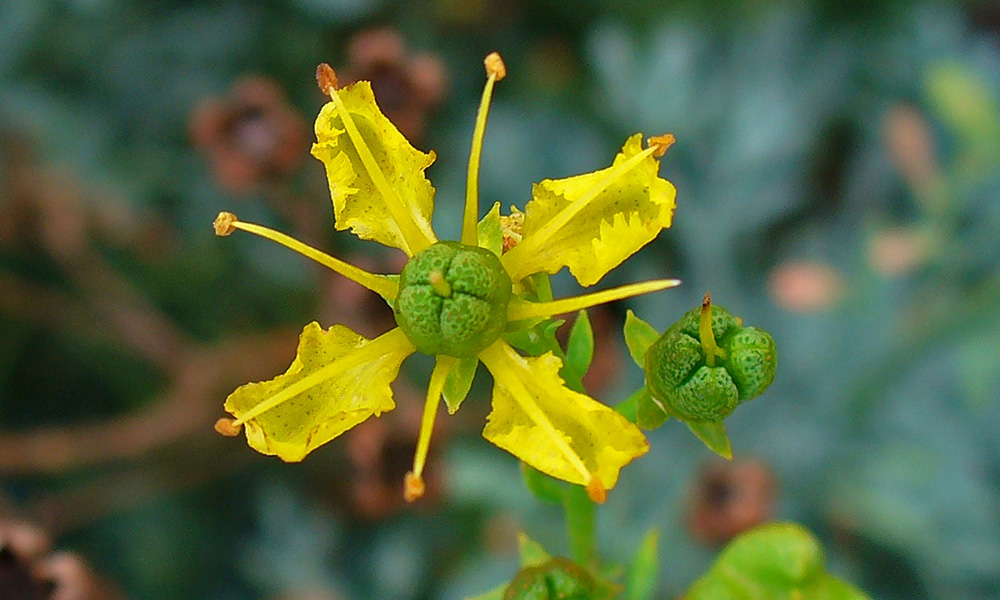Područje Dalmacije zbog svojih posebnih klimatskih i zemljišnih prilika bogato je samoniklim ljekovitim i aromatskim biljem. Ona je stanište za mnogobrojne biljne vrste koje obitavaju na ovom području. Površine na kojima su zasijane aromatične i ljekovite kulture iz godine u godinu rastu i u zadnjih petnaest godina su se udvostriučile.

Arnica is a durable, about 50 cm high, poorly branched plant sprinkled with tiny hairs. It has about 9 cm long, 3-5 mm thick, cylindrical, dark red rhizome, covered with many root veins, which lasts several years. The stem has at the top of one or more head-like, golden flowers, like daisies. It blooms from June to August. It has a pleasant, resinous odor and bitter and spicy flavor. More elongated oval leaves come in the form rosettes at the bottom of the stem from the underground. They are not serrated, unlike the leaves on the stem, which are smaller, jagged and facing each other.
The flowers are harvested without ‘calyx ‘and wrapping leaves, before fully blooming in flower heads. The flower should be completely cleaned of arnica flies larvae, black, slightly larger than a grain of millet and toxic, and quickly dried off not to turn black from moisture. This is done in July and August. Rhizome with roots is removed in spring and autumn. For medical purpose flower and root, and sometimes leaves are commonly used. The flower is a part of the plant used and the composition of arnica is: alkaloids, amines (betaine, choline and trimethylamine), carbohydrates (mucosal polysaccharides including inulin), coumarins (scopoletin and umbelliferone), 0.4-0.6% flavonoids, sesquiterpene lactones: helenalin, etheric oil 0.2-0.3%, amino acids, bitter substances, caffeinic acid, carotenoids, fatty acids, phytosterols, polyacetylenes, tannins.
Then camphor, bitter substances and malic acid. There is about 0.10% of eteric oil in the flower, crystalinic arnicin, flavonoids, resin, tannin, color and arnisterol, and in the roots there is additionally about 10% inulin.
Arnica montana is used in the treatment of wounds, by relieving
pain and accelerating healing. It is used as well in the treatment of the throat, and with other medicinal herbs in the treatment of pneumonia, typhoid fever, heart failure, for promoting blood circulation and secretion of sweat and urine. This plant is an endangered species. Since the 18th century, when the plant began to be used in pharmacies, its popularity has grown significantly. Uncontrolled harvesting is the reason that the plant has become quite rare, so it had to be protected. Today, the plant is cultivated for medicinal purposes. In the Middle Ages Arnica was used as a plant for all wounds and injuries of the body, and sometimes for anti-embolism and anti-thrombosis.
In phytotherapy it is used locally for burns, frostbite, insect bites, gingivitis, sprains, bruises, rheumatic problems and ulcers. It is also used for accidents and sports injuries (hematoma, swelling). So far, conducted clinical studies have confirmed the positive effect of arnica on sore muscles and improvement of venous tone. More controlled studies should be carried out to confirm other effects on people.

Chamomile is an annual plant of the family Asteraceae, 15-60 cm high, with thin and branched roots, with twice divided leaves. Scented flower heads are made up of yellow bisexual tubular flowers in the middle and white ligules at the edge, which are bent downwards. The fruits are small, oblong, light-brown 3-rib horns. The plant blooms from late April to September.
Chamomile is widespread in almost all Europe and Asia. It grows in areas exposed to the sun.
Chamomile is primarily harvested as flowers without stalks. The quality of dried chamomile depends on the time of harvesting and the method of drying, so extra care should be taken about that. It was confirmed that heads have the most medicinal substances between third and fifth day after the beginning of flowering. Picked heads are dried by heat, but taking into account that the temperature is not higher than 50°C.
The use of chamomile is very widespread, both in traditional and in official medicine. Chamomile flowers are most often used for preparation of tea, being one of the most famous folk medicine. Chamomile is a traditional folk remedy for stomach problems, cramps, digestive problems, gastritis, ulcers, tranquilizers nervous tension, insomnia and fatigue. Chamomile is applied externally for rinsing inflammatory processes of the skin, rash, wounds, burns, irritation, inflammation of the eyes, vaginal washes and baths because of its antiseptic properties. It is used for kidney disease, liver and gall bladder.
Chamomile tea is an ingredient that is applied to reduce cramps and colic in infants and babies. For stomach problems chamomile is combined with mint and lemon balm. Chamomile tea is instilled into the eye or put on the eye in the form of wet compresses in case of eye infections. Inhalation of chamomile tea is applied for fever, infectious and allergic respiratory diseases, inflammation of the sinuses. Warm chamomile tea is used for rinsing the mouth and gargling during the throat and gums inflammation facilitating breathing and refreshing the body, thus reducing inflammation processes. Chamomile extract is part of the composition of the ointments and suppositories for hemorrhoids. Shampooing with chamomile is used for plating blond hair, and brightening of the darker. The use of chamomile in aromatherapy is also well known. Freshly prepared chamomile oil is very appreciated and well known, too. It is equally valued in cosmetics, so it is said that it heals the body from the inside and adorns from the outside.
Due to special climatic and geographical features, the region abounds with wild herbs and aromatic plants.
Geographical location causes a big climatic diversity on small area with an extremely moderate climate, and regular change of seasons.
750 years of pharmaceutical tradition and plant cultivation for that purpose.

Eyebright belongs to the family Orobanchaceae, formally included in the Scrophulariaceae (Snapdragon). It is an annual plant of height up to 15 cm. The plant is semi-parasitic because it attaches to meadow grass by its suck root and sucks their juices. It blossoms from June to October. There is traditional word of mouth saying and belief that when it grows abundantly, harsh winter follows.
Eyebright can be found in dry meadows, forest clearings and infertile soils, from lowland to mountain areas. The plant is harvested while it blooms, without roots. It is dried in the shade and stored in a place protected from moisture. It is very strong and one should always follow the prescribed amount for the beneficial effects.
Eyebright is a plant with basic activity in the treatment of eyes and it is a great disinfectant. It is used for inflammation of the conjunctiva, eye weakness due to fatigue caused by reading or writing, inflammation of the edges of the eyelids, inflammation of the iris, glaucoma, ulcer of cornea, inflammation of the lacrimal bags, conjunctivitis and the likes. It has a beneficial effect on the eyes, but also on the skin around the eyes, and it is therefore a known natural substance in fighting off wrinkles.
It is also recommended for respiratory diseases such as colds, flu, bronchitis, indigestion, and stomach and intestinal pain. It has beneficial effect on the nerves, relieves headaches caused by neurosis, insomnia and hysteria, it strengthens the body and helps with alcohol poisoning and nicotine.
Eyebright consists of acids, alkaloids, amino acids, flavonoids, iridoids (Aucubin), fenetilnog glycosides, tannins, essential oils, bitter substances, β-carotene, phytosterols, waxes, carbohydrates and vitamin C. It is used in phytotherapy in nasal catarrh, sinusitis and conjunctivitis. It is often used in homeopathic remedies. Traditional literature states that 10-60 drops of Eyebright tincture can lead to side effects which include confusion.

Common Rue, known as the “herb of grace” is a subshrub, a perennial herb with numerous glands containing essential oil. It has an upright tree of 20-100 cm height, of round section, numbed in the lower part. The leaves are alternate, feathery, in bluish color. The flowers are odorless, greenish-yellow, the central flower has five petals, while all others have four. It blooms from June to August.
Sepals are triangular, coronal slices along the circumference of toothed or notched fringes. The fruit is a capsule of a section up to 1 cm. The plant contains a milky juice, which is used against warts and corns. It also contains essential oil, flavone glycosides, furanocumarins, alcaloids of quinoline type.
It was used as a spice since ancient Roman times, but in very small quantities due to a very intense, to someone even very unpleasant odor and taste, as well due to the fact that larger amounts affect the intestine badly.
It was used in healing eye diseases, diseases of the ear and in the deprivation of intestinal parasites. It should be used only in the form of standardized finished preparations. In homeopathic remedies it is used for contusions of muscles and joints, diseases of veins and tired Characteristics of universal medicinal plants were attributed to the rue, and in Italy it was used as ‘protection from bad views’. Soaked in holy water, it was used to bless the house.